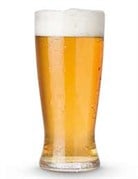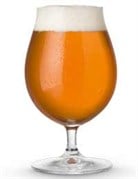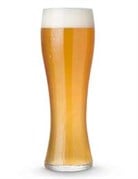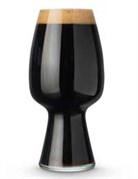Selecting glassware
Over time glass manufacturers have designed different glass shapes to unfold the flavours of different beer styles. A well designed glass with the appropriate shape will enhance the volatile aromas and underline the characteristics of a given beer style.
The leader of this change was Riedel, an Austrian company established in 1678 and currently employing the 11th generation of the Riedel family. It was Claus Riedel (9th generation) who was the inventor of the functional wine glass. In New Zealand, the Spiegelau Company (another Austrian glass manufacturer, established in 1521) who are famous for their production of lead free crystal, supply a popular range of beer glasses which are a delight to drink from.
The Spiegelau Craft Beer Glasses below have been approved by an expert tasting panel of master brewers and industry professionals. Focusing on beer enjoyment, members of the tasting workshop tested multiple glass shapes to find the best glass for India Pale Ale, American Wheat Beer, Stout and Barrel Aged Beer. In the experts’ opinion, the custom-shaped glasses successfully deliver the complexity of aromas on the nose while demonstrating the optimum beer texture, balance and flavor intensity on the palate. Staying faithful to the spirit of Bavarian artisan craftsmanship, they have created these unique, functional glasses to bring out the best in complex beers.

Lager glassResembling the shape and volume of a traditional pint glass, the lager glass is slightly wider at the mouth than at the foot. Designed for pale lagers, ales, English strong ales and German Helles, this glass balances the ‘hoppy nose’. |

IPA glassThis India Pale Ale glass has been designed to showcase the complex and alluring aromatics of American “hop-forward” IPA beers. It preserves a frothy head, enhances taste and mouth-feel, while the comfortably wide opening enables the drinker to savour each beer. |

Beer tulip glassThe beer tulip enhances the hop flavour in Belgian style ales and Pilsner style beers, supporting the malty character of these bolder beers. The open mouth allows for an intense release of flavours. |

Wheat beer glassThe design of this glass accentuates the aromas and flavours naturally found in wheat beers. The large size and tall thin shape is designed to hold volume and a fluffy head. |

Stout glassA relative newcomer to the glass scene, this glass is designed to accentuate the roasted malt, rich coffee and chocolate notes that define the Stout beer style. |
Always serve beer in clean glasses as the presence of grease destroys the foam or head on the beer. To test if a glass is clean, fill until overflowing with water, then tip the water out and hold the glass upside down. If the water forms a continuous sheet inside and out, it is clean. Spotting indicates the presence of grease - something you may not mind with Fish & Chips, but definitely not with beer!
Pouring beer
We have a curious practice in New Zealand of trying to pour a beer to minimise the foam. This possibly dates back to the late 1950s when there were almost riots over the government-set price of beer and serving sizes.
In 1958 the government set a maximum price which equated to a penny per ounce. Many a bloke felt his local was trying to diddle him by “short-pouring” – stepping up the gas pressure to deliberately create a bigger head and therefore reducing the amount of actual beer in the glass, while still charging the maximum price for the size of the glass. (This was further complicated when great Wellington poet and beer lover, Denis Glover made headlines by measuring the volume of glasses and discovering they held less than advertised in the first place!).
It seems we Kiwis have been hooked on the idea of filling a glass to the rim with minimum foam ever since. This is done by tilting the glass on its side and pouring gently down the inside. We have been the losers in this practice.
A good head does wonders to a beer. First, it looks great, and second, it actually enhances the flavour by changing how the beer feels in your mouth. The chemistry of how foam works to improve flavour is complicated but a good 2–4cm of foam is a fine addition to your glass.
One of the things that deters a good head is a dirty glass, or one that hasn’t been rinsed properly. So make sure your glasses are clean and if you use a dishwasher, make sure they are re-rinsed.
These days there are a myriad of glasses designed specifically for different beer styles and the best of them do improve the flavour, but that’s a whole different topic.
In short, to get the best flavour out of your beer you want a rousing pour.
Aim for the middle of the glass to get some action going and then tilt it slightly to get the rest of the beer under the head.
If your beer is bottled conditioned, there will be some sediment in the bottom – this is harmless but can add a yeasty bite to the beer that’s not to everyone’s taste. So with these try to end your pour before the sediment falls into the glass.
Some wheat beers are designed to be “roused” so the yeast is disturbed and hangs in suspension – to do this, roll the bottle gently on its side before pouring to make sure the wheat beer is suitably cloudy.
If it all sounds like a Japanese tea ceremony, don’t worry – just pour the beer quickly and without too much fuss and you should be right.


